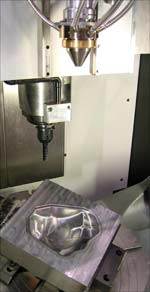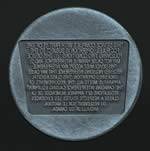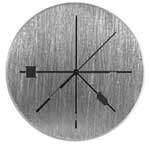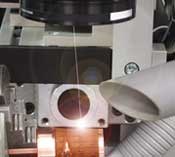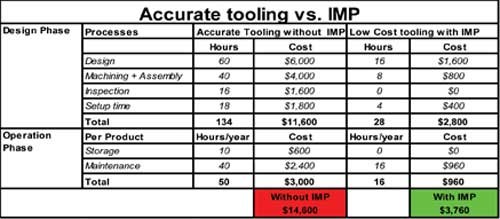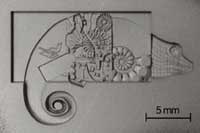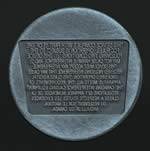Laser Systems: Engrave, Texture, Mark, Frost and Smooth with One Tool
By embracing laser machine tools, you can reduce steps in your machining processes, which results in improved productivity, improved quality and increased flexibility.
Moldmakers are always trying to identify ways to become more efficient, reduce costs, improve quality and become more diverse. In other words, how to make more money. Talk to a molder about machine processes and they think efficiency. Talk to them about productivity and they want to find out ways to fill their shop to capacity. These are some of the ingredients of success. But getting there is not always that obvious. Many job shop owners, molders and other manufacturing industries have found ways to reduce steps in their machining processes resulting in improved productivity, improved quality and increased flexibility by embracing laser machine tools.
One Job, One Tool, One Process
Choosing the proper laser machine configuration is key to simplifying the engraving process. By using the right options, optimum flexibility, quality and speed can be achieved. A laser engraving machine can control up to five mechanical axes for moving a part and two optical axes for controlling the laser beam. One can also include a hard stone table for higher thermal stability, accuracy and repeatability, use touch probes, tactile probes and other tooling guides. Laser engraving software can accept .stl or other common CAD files for 2-D and 3-D engraving. It is critical that a mold shop finds the right mix to ensure the laser will help in his/her particular processes.
The All-In-One Laser
A laser system has the capability to engrave, texture, mark, frost and smooth with one tool. This flexibility is achieved by a mixture of hardware/software adjustments and beam quality. With a little imagination, the applications are limitless. A mold shop can engrave vent lines on a cavity, engrave date/time inserts, electrodes, mark a cavity with an ID code/serial number, texture a mold for a bottle, automotive part, cell phone or a multitude of other applications (see Figure 1). To top it off, lasers aren’t picky. Whether it is a material with a Rockwell hardness of 32, 65 or higher, the results are the same—high quality engraving, no affected zone, and in many cases, no post processing. Lasers are accurate, repeatable and have a fast processing time with a tool speed of 7.9"/s (200mm/s) or better.
And it is not just using technology for technology’s sake. The cost savings and time savings are measurable. For example, engraving 25 characters raised characters 0.008" high in an area of 3" x 0.4" would take a minimum of four steps and 10 hours using conventional methods. A laser can machine directly on the part and, in this case, do it in two hours and in one process. Lasers also can smooth the engraved surface eliminating—in some cases—the need for addition steps.
Think of a tool that has a diameter of 0.004" (0.10 mm). This tool does not wear out. It can machine a part using that one tool and it requires no manual adjustments during the operation. It is capable of engraving vent lines accurately and repeatable with a radii size of as small as 0.002" (0.05 mm) and a depth of 0.0005" (0.012 mm). This same tool can be used to remove material to produce features on a PET bottle mold, reducing changeover time and offering additional cost savings. This is only one of the many strengths of a laser machine tool (see Figure 2).
Software Functionality
Laser engraving software today is simple to use—utilizing a GUI (graphical user interface) that uses familiar terminology to the machinist. It has the capability to adjust laser settings, control up to five mechanical axes, tell the laser what to engrave and control a multitude of options. It truly is multi-tasking. But the more advanced software offers additional functionality to benefit the moldmaker.
Depth control is critical to a moldmaker and in laser machining, depth control offers other benefits. A moldmaker can eliminate the need for pre-processing, can automatically adjust for different hardnesses and can engrave features with better depth accuracy, typically within +/- 0.0006" (0.015 mm).
Depth control allows for simple setup when using different materials and an ease of use for operators who may not know exactly what laser parameters to use. This is achieved by using real-time depth measurements so that the software can adjust accordingly throughout the slicing/engraving process.
Depth control software is intuitive and smart. By adding a tactile probe or laser distance sensor and the appropriate axes controls, the software can simplify the process, control the complete engraving process and help produce a cavity in a minimal amount of time with the highest degree of accuracy and repeatability (see Figure 3).
Bells and Whistles
The use of a programmable X/Y table and Z axis control are necessities for the serious mold, tool and die shops. Lasers engrave in a finite area depending on the output lens used. An X/Y table can be used to move a large part that has several areas to be engraved or to hold a fixture that contains many parts to be engraved in one job accurately and repeatably. With the use of a hard stone table, it is possible to have a positioning accuracy of +/- 0.0004" (0.010 mm) and repeatability of 0.0002" (0.005 mm). By adding a 4th and 5th axis, the machinist can handle a multitude of differently shaped parts that require engraving in different areas (see Figure 4).
Laser engraving machines also can come with a cornucopia of options that would make any moldmaker recognize that CNC machines do include lasers. Touch probes, for setting up positioning of molds or parts to be engraved, tactile probes and laser distance sensors are also available to ensure that they are machined to the proper depth. Even enclosures are built with easy-to-operate pneumatic and manual doors for easy access.
Integrated Vision: Helping the Process
Integrated vision systems are now being used to help moldmakers and tool and die shops machine parts faster, with less waste, quicker setup times and resulting in lower operational costs. Multiple date/time inserts can be produced in low cost, simple fixtures; frosting can be applied without masking; and, texturing can be achieved without using environmentally unfriendly chemicals. All can be achieved with a higher level of accuracy and repeatability than before.
This level of accuracy is not dependent on the tight tolerance of the fixture or the part. In fact, it is possible to achieve accuracies of +/- 25 um or better and IMP (Intelligent Mark Positioning) measurement repeatability of +/- 2 um by using little or no fixturing at all. These accuracies can be extremely critical to applications such as the producing of dies for the coin industry, some molds, marking of medical devices and day/night marking of automotive buttons.
Integrated vision can bring added value by reducing operational costs, reducing waste and improving precision tooling especially if machining higher volume parts. Key Plastics is a major supplier of many automotive parts to companies such as GM, Ford and Chrysler. They have found many benefits of using integrated vision. Abel Vieira, a laser process engineer with Key Plastics, Portugal states that using integrated vision “has reduced our wasted parts by better than 90 percent compared to our laser system without IMP (Intelligent Mark Positioning).” This can be achieved by using simple fixtures offering additional savings by as much as 75 percent (see Figure 5).
Where Do We Go From Here?
Lasers play an important role in many industries including moldmaking, tool and die and manufacturing of parts. Many have discovered its versatility, benefits and cost savings to their operations. They can be used for marking, engraving, drilling, welding, the list goes on. But, the demands put on the moldmaking industry to continually have an edge over competition—whether it is due to demographics, technology or other changes in the marketplace—requires laser manufacturers to continually improve and grow to keep up.
Laser manufacturers are looking at ways to offer moldmakers machine tools that are more automated and flexible resulting in less part handling. Whether that is through robotics, additional or more complex axis control and/or software, or through laser technology itself, one can be assured that the laser machine tool will become more efficient, reduce costs and improve the quality of the molds.
By forming partnerships and truly understanding what is important to the moldmaker, laser machine tool manufacturers will be able to supply them with that key ingredient to make them more successful.
Related Content
The Role of Social Media in Manufacturing
Charles Daniels CFO of Wepco Plastics shares insights on the role of social media in manufacturing, how to improve the “business” side of a small mold shop and continually developing culture.
Read MoreTackling a Mold Designer Shortage
Survey findings reveal a shortage of skilled mold designers and engineers in the moldmaking community, calling for intervention through educational programs and exploration of training alternatives while seeking input from those who have addressed the issue successfully.
Read MoreHow to Improve Your Current Efficiency Rate
An alternative approach to taking on more EDM-intensive work when technology and personnel investment is not an option.
Read MoreMaking Mentoring Work | MMT Chat Part 2
Three of the TK Mold and Engineering team in Romeo, Michigan join me for Part 2 of this MMT Chat on mentorship by sharing how the AMBA’s Meet a Mentor Program works, lessons learned (and applied) and the way your shop can join this effort.
Read MoreRead Next
Part Two of a Two-Part Series High Power Laser Technologies And Moldmaking
Using high power laser cladding for rapid tooling and tool repair.
Read MoreLaser Engraving/Marking: A Complement to EDM’ing and Milling
Laser technology may have a place in your mold build process when it comes to engraving and marking.
Read MoreHow to Use Continuing Education to Remain Competitive in Moldmaking
Continued training helps moldmakers make tooling decisions and properly use the latest cutting tool to efficiently machine high-quality molds.
Read More
